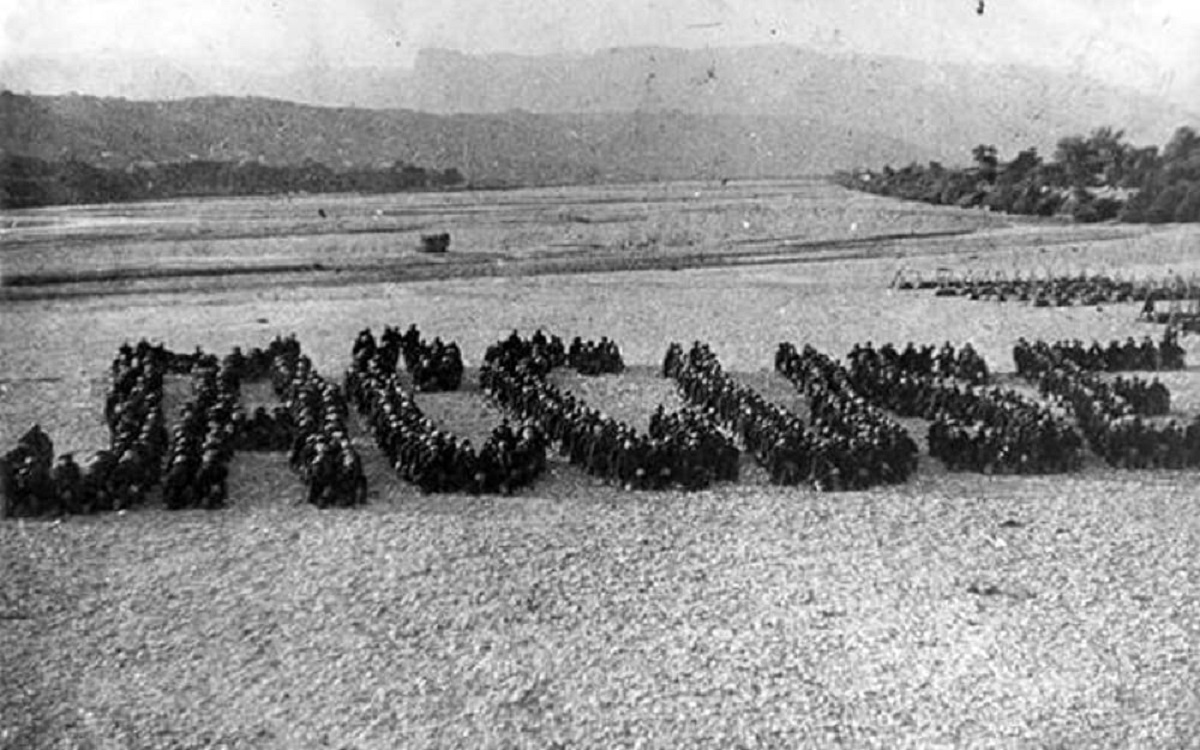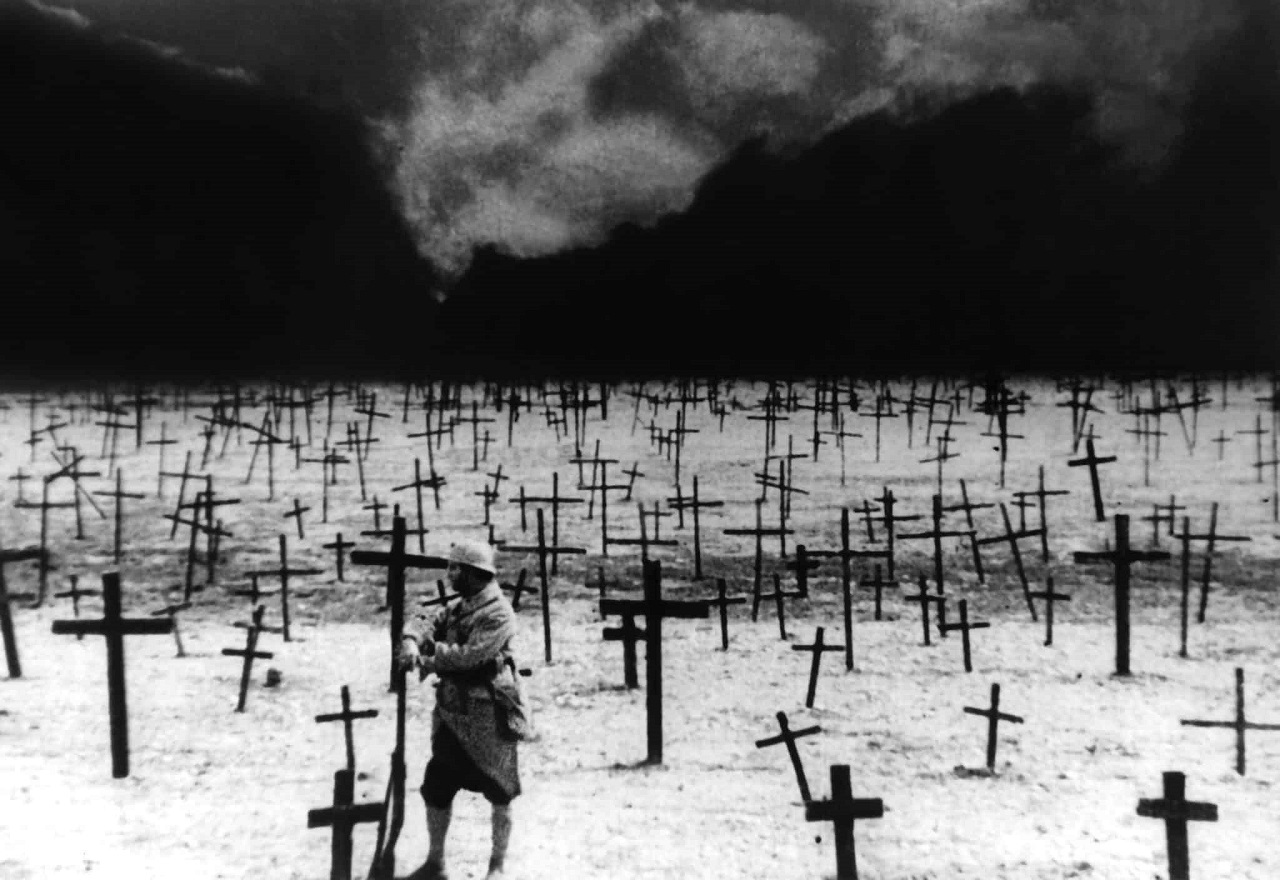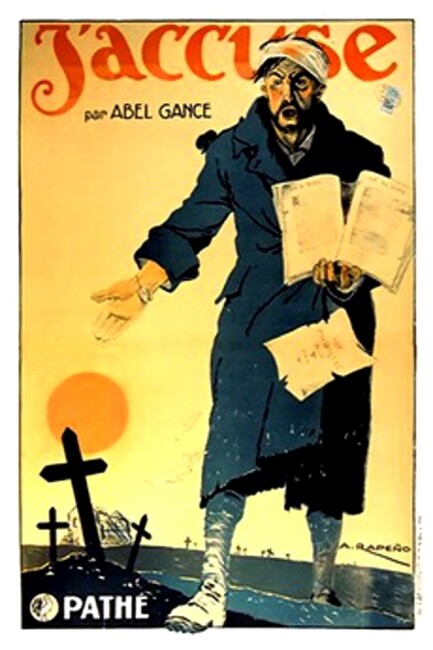France. 1919.
Crew
Director/Screenplay – Abel Gance, Photography (b&w) – L.H. Burel, M. Bujard & M. Forster. Production Company – Pathe Freres.
Cast
Romuald Joube (Jean Diaz), Severin Mars (Francois Laurin), Marise Dauvray (Edith Laurin), Monsieur [Maxime] Desjardins (Maria Lazare), Angele Guys (Angele)
Plot
In the small Provencal town of Orneval, the poet Jean Diaz dallies with the married Edith Laurin, much to the ire of her husband Francois. Then comes the announcement of the beginning of World War I. Francois goes off to sign up. Back home, Jean learns that Edith has been captured by the Germans. He immediately signs up and joins officer’s school to emerge as a lieutenant – only to be assigned to the same unit as Francois. Their rivalry turns to friendship. However, the war has an effect on Jean and he is given medical leave to return home to his dying mother. While there, Edith makes a return. She brings with her a daughter Angele and tells how a group of Germans forced themselves on her. Francois returns and knowing he would never accept Angele, Jean agrees to pretend that she is a child left with him by a relative, but the truth lurks.
Abel Gance (1889-1981) was one of the early cinema pioneers. Gance began making films during the 1910s, often using highly experimental techniques. His greatest epic is considered to be the massive undertaking that was Napoleon (1927), a film that was savagely cut by various distributors resulting in an exhaustive attempt from the 1980s onwards to create a restored version. (Abel Gance’s other genre works are listed below).
With the outbreak of World War I, Gance was drafted into the French Army’s Service Cinématographique. This proved a traumatic experience during which Gance saw many comrades killed before he was eventually granted a release on health grounds. During this time, he conceived J’Accuse. The title J’Accuse was taken from the famous newspaper letter of 1898 by Emile Zola, exposing the French military’s rail-roading of Jewish officer Alfred Dreyfus. J’Accuse was also the original French title for Roman Polanski’s film based on the Dreyfyus affair, released in English as An Officer and a Spy (2019).
Gance was able to reenlist with the Service Cinématographique and returned to the battlefield to film, recruiting actual soldiers to play parts in many scenes. The result becomes a powerful anti-war work, one where Gance decries the waste of human life that was the war. Gance pulls few punches – the drama sets up a series of happenings and disasters. Each of these is blamed on the war, whereupon the title card ‘J’Accuse’ (I Accuse) comes out of the screen in bold relief.

To get an idea of how remarkable a film this is, it is worth comparing Gance to countryman George Melies who made his last film only six years before this. Melies did remarkable things with effects but never used artificial lighting, nor progressed beyond a single camera set-up in a scene ie. his films were shot as though they were stage plays with the camera seated where the audience would be. In the decade after Melies’ last films, cinema discovered artificial lighting and J’Accuse comes with a series of stunning lighting schemes. In the arrangements of shadow and light, you often feel like you are in the presence of some Dutch master. Cinema has also discovered editing, along with the idea of drama within a film and how to cut to best present it. The period also saw the introduction of the actor to give life to roles and their becoming a recognisable face, creating the first film stars.
J’Accuse was made in the period between the Lumiere Brothers first film in 1895, Melies’ pioneering work in the 1890s-1900s and the emergence of what would become Hollywood beginning in the 1910s and gaining its strength from the 1920s onwards. During this period, the essence of what cinema would be was laid down. Later Hollywood with its commercial dictates made the standard length of the film around 90 minutes. J’Accuse comes before that and runs to 205 minutes (3½ hours), which is something that would usually only get made as an epic today.
Certainly, when Hollywood came along, it tightened matters like pacing. Gance tells a very leisurely story during the long intro where we see the two rivals and the love triangle in their hometown and then their going off to serve, forming a friendship as they end up in the same unit. It does get very long-winded and slow going at times. The romantic triangle drags the proceedings out for nearly two hours before Gance gets to where he wants to go.

The fantasy element only enters right at the end. There are hints throughout – images of dancing skeletons, the phantom Gaul that walks along the trenches and battlefield. And then comes one of the great endings where we see the ghosts of the dead risen up out of their graves and come to haunt the living calling out “J’Accuse” to those who sent them there. The final scene where Romuald Joube restates his poem, a rhapsody to the sun, and turns it into something bleak about an indifferent sun looking down proves to be one of the great cinematic poetic soliloquies.
Abel Gance later remade the film as J’Accuse (1938), which has only a third the runtime of this version, and transfers the anti-war sentiments to the pending start of World War II.
Abel Gance’s other genre works include:- The Madness of Dr Tube (1915), an experimental short in which a scientist takes a mind-altering substance; and The End of the World (1930) about the impending destruction of the world by a comet.
Full film available here


